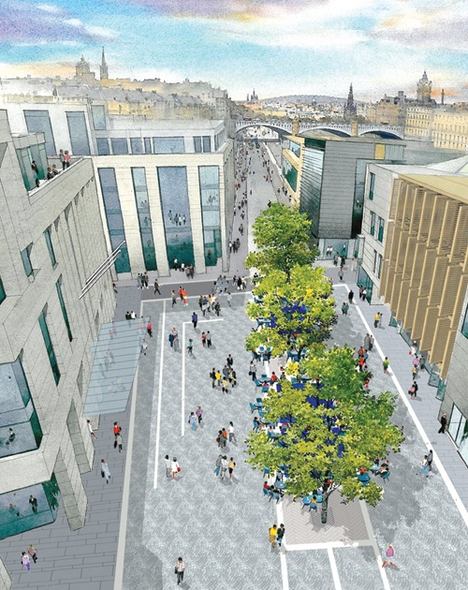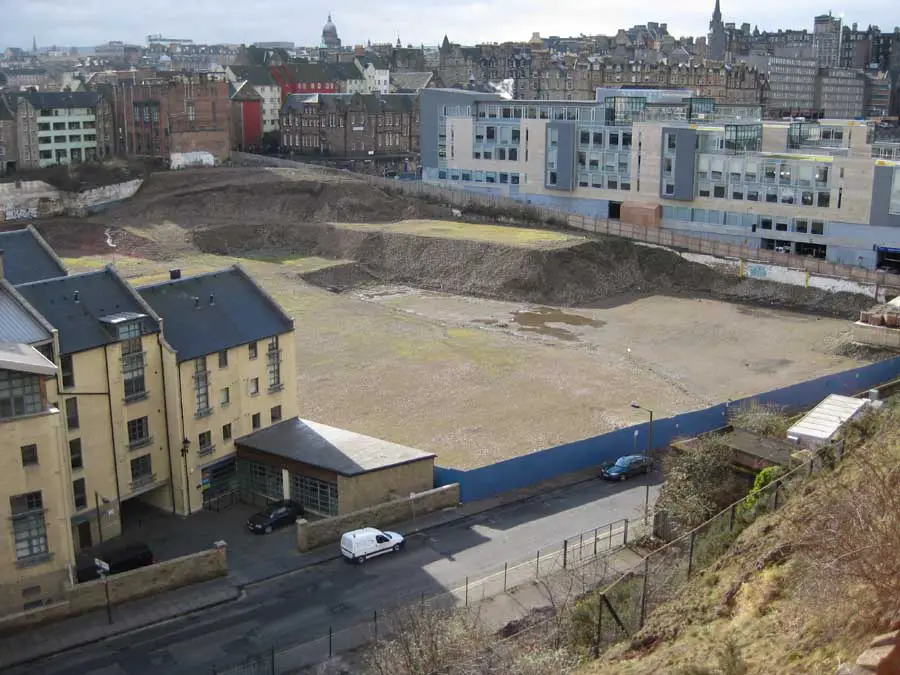
"The 1850s and 60s were momentous decades in Glasgow. In the 1840s, the city had suffered a cholera epidemic and the poverty-stricken citizens had been provoked into large-scale bread riots. But Glasgow picked itself up and dusted itself down, and a powerful drive of civic optimism took over. Employment rose as the city council intervened to order advances in its infrastructure. Improved water supplies, public parks, wide streets and better sewage, drainage and housing were all priority developments. A Glasgow Police Act of 1866 was a positive influence, as was the City Improvement Act of the same year, which led to huge developments in housing and health. The prosperity was not instant, nor yet for everyone. Bad housing and health were still endemic, and while there seemed to be plenty of work, the 'hire and fire' ethos was still the norm. Many workers were forced to move from farm to factory to construction site to shipyard in the constant effort to maintain a position on the treadmill of 'cheap, plentiful labour'. The city serviced an enormous army of people who arrived from the Highlands and Islands, Ireland and elsewhere; all were anxious to prosper – one Scot in five lived in Glasgow. Nevertheless, the city's drive for self-improvement was to have enormous success and led to a world-wide reputation for municipal organisation.Glasgow's citizens recognised and cherished something of enormous value that we have lost since these harsher days – a genuine sense of civic pride that was rooted in the Scots tradition of The Common Good. This is an ancient and uniquely Scottish concept confirming the continuing public ownership of assets, both heritable and moveable, which has been lamentably mismanaged and compromised by many of Scotland's local authorities in recent decades. The property of Scotland's Common Good funds is legally held by statute in trusteeship by local councillors on behalf of the local population; such property must by law be registered, accounted and valued separately from all other local authority accounts; it is not to be equated as 'belonging to the council' – it belongs to the local communities. Councils, while holding legal title, are constrained in how the property is administered and disposed of, since it is held in trust for the residents of the former burghs. Unfortunately, there are conflicting attitudes pervading the issue. In 1914, Glasgow's town clerk, noting the city's 'parental view of its duty to the community', confirmed the opinion of the commissioners on municipal corporations in Scotland of 1835, when they stated that 'the common property is truly an estate held in trust by the community'. Recently however, the City of Glasgow's director of finance boldly told the city council that, 'the common good is seen as corporate property of the council'. But Lord Drummond Young, in the Court of Session in 2003 pointed out that 'the town council or other local authority is regarded in law as simply the manager of the property, as representing the community' [Lord Drummond Young in Andrew Wilson and Others v Inverclyde Council 2003]. Some Common Good funds are well-endowed; others ought to be. Seven hundred years ago Robert The Bruce granted rights to Aberdeen over his favourite hunting-grounds; today, that gift alone is worth £35 million. Inverness had similar historical donations now worth £25 million – and bringing in an annual income of nearly £2 million. It is sadly likely, however, that some councils have transferred assets to other accounts (possibly resulting in inappropriate or even illegal disposal) or otherwise 'lost' them. Record-keeping has been poor, thus making legitimate inquiry difficult. Glasgow has recently revealed an astonishing lack of heritable common good assets (buildings, land, parks, municipal undertakings, etc), with no mention of all kinds of assets recorded in the past, and no moveable assets whatsoever (regalia, furniture, works of art, books and all manner of gifts and deposits). In response to FoI inquiries by Mary E Mackenzie, the city council is blocking further information on the bizarre grounds that just to search their title deeds would cost in excess of £4 million. In 1914, John Lindsay the then town clerk of Glasgow listed many of the estate lands, docks and harbours, properties, rights, bonds and other assets within the Common Good. The list contains some lucrative surprises, such as the entire municipal transport undertaking – declared to be an asset of the Common Good by an Act of Parliament in 1909. Lindsay noted that the total value of Common Good assets was over £6.5 million (at 1914 values); what can have happened in the intervening years to prevent the significant increase in that value? No doubt some physical assets will have disappeared or been legitimately disposed of, but what happened to their value? The thing to remember is that £6.5 million in 1914 is worth several hundred million pounds at today's values, and should have been increasing over the period. The question therefore remains: what has happened to the accumulated value of many hundred million pounds worth of assets belonging to the common good? In the early 1900s, a visiting American professor of civic administration, described Glasgow as 'in many ways the most aggressively efficient city in Great Britain'. Frederic Clemson Howe was a Cleveland lawyer who became a progressive reformer in the fields of municipal planning, taxation and democratic control. He had visited and studied in detail numerous European cities, and Glasgow came as a puzzling but satisfying revelation to him. He was deeply impressed by the fact that the city had regained control of all of its civic services from the stranglehold of an unregulated private sector. This popular move – so at odds with our own experiences of ALEOs ('arm's-length organisations' such as Culture and Sport Glasgow) and other managerial sleight of hand – was achieved not only without a whiff of corruption, but with laudable evidence of efficiency, democratic openness and modest financial profit. For Howe, transparency and accountability were paramount, and the outcome received his unreserved response: 'Enthusiasm and interest, devotion and pride – these are the characteristics of Glasgow citizenship. I have talked with the heads of the city departments, with a score of town councillors, with police officers and fire officials, with clerks, bathhouse custodians, and conductors on the tram-cars – with all sorts of men, Tories and Liberals, Radicals and Socialists, from the Lord Provost down to the cab-driver. And this is the only citizenship I have been able to find.' ['The British City – The Beginnings of Democracy' by Frederic Clemson Howe, New York, 1907, p.163-4] Andy Wightman and James Perman, who have conducted the most prodigious research into these issues, concluded that 'the estimated value of the common good assets that should be held on behalf of communities to generate wealth and community benefit might easily stand at around £1.8 billion'. ['Common Good Land in Scotland – a Review and Critique' 2005, p.23] The total value they could identify from Scottish council figures was one tenth of that estimate. When it comes to much of the property that is held in our disparate Common Good accounts, it is often local individuals and organisations that have most knowledge, interest and concern for its protection. Many of these people today have to take the financial risk of facing their local authority across courtrooms in order to try to protect what they regard as rightfully theirs. Were the entire accounting system to be completely overhauled and improved, and recompense made for past mismanagement, there would be hugely beneficial outcomes for civic pride and revitalisation. That would surely placate the disturbed ghost of the progressive Frederic Clemson Howe – and not least the people of Scotland.
David Harvie was one of three individuals who represented petitions on Common Good Assets in the Scottish Parliament in 2009 [Petitions 875, 896 and 961]







